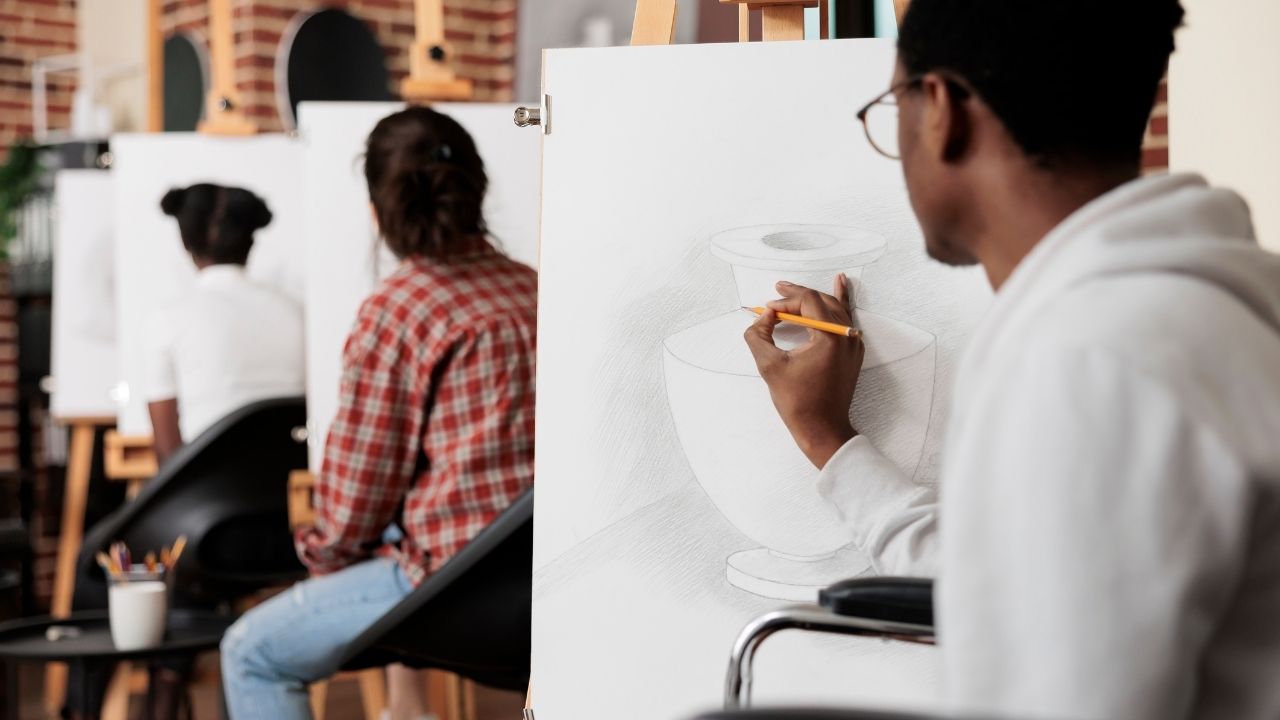
In the ever-evolving realm of creative expression, the art of sketching has long been recognized as a powerful tool for honing one's attention to detail. Whether you're an aspiring artist, a designer in training, or simply someone who appreciates the beauty of the visual world, mastering the techniques of sketching can unlock a new level of observational prowess and attention to detail that can enhance your creative endeavors and everyday life.
In this comprehensive guide, we'll explore a range of sketching techniques that can help you sharpen your focus, improve your observational skills, and unlock new levels of artistic expression. From Observational Drawing to Perspective Studies, Shading Techniques, Gestural Sketching, Compositional Planning, and Rendering Methods, we'll delve into the intricate world of sketching and discover how these practices can transform the way you perceive and interpret the world around you.
Observational Drawing: Unlocking the Power of Attention to Detail
At the heart of sketching lies the art of Observational Drawing, where the artist meticulously captures the nuances and intricacies of their subject matter. By training your eyes to observe the world with heightened attention, you'll develop a deeper understanding of shape, form, and the subtle details that often go unnoticed.
Through regular practice of observational drawing, you'll learn to discern the unique characteristics of the objects, people, or scenes you're sketching. From the delicate curves of a flower petal to the intricate patterns of a fabric, this skill will enable you to translate your observations onto the page with remarkable precision and realism.
Perspective Studies: Mastering the Illusion of Depth
Perspective Studies are a crucial component of sketching, as they allow you to create the illusion of depth and three-dimensional space on a two-dimensional surface. By understanding the principles of linear perspective, vanishing points, and foreshortening, you'll be able to depict your subjects in a more realistic and visually compelling manner.
As you delve into perspective studies, you'll learn to navigate the spatial relationships between objects, identify the horizon line, and manipulate the placement of elements to create a sense of depth and dimensionality. This knowledge will not only enhance your sketching skills but also sharpen your attention to the way the world is structured and perceived.
Shading Techniques: Bringing Depth and Dimension to Your Sketches
Mastering the art of Shading Techniques is essential for adding depth, volume, and realism to your sketches. From the smooth blending of tones to the strategic use of hatching, cross-hatching, and stippling, these techniques will allow you to capture the nuances of light, shadow, and texture.
As you experiment with different shading methods, you'll develop a keen eye for the interplay of light and shadow, and how they shape the forms and surfaces of your subjects. This attention to detail will translate into sketches that feel alive and three-dimensional, captivating the viewer and drawing them deeper into the scene.
Gestural Sketching: Capturing the Essence of Movement and Emotion
Gestural Sketching is a dynamic approach that focuses on capturing the essence of a subject's movement, energy, and emotion. By training your hand to respond quickly and intuitively to the visual cues before you, you'll develop the ability to convey a sense of vitality and expressiveness in your sketches.
Through gestural sketching, you'll learn to focus on the core shapes, lines, and rhythms that define your subject, rather than getting bogged down in intricate details. This practice will sharpen your ability to observe and react to the world around you, enabling you to capture the fleeting moments that often elude the casual observer.
Compositional Planning: Elevating Your Sketches to Works of Art
Compositional Planning is the art of arranging the elements within your sketch in a visually compelling and meaningful way. By considering factors such as balance, proportion, and the interplay of positive and negative space, you can create sketches that captivate the viewer and draw them into the scene.
As you explore the principles of composition, you'll develop a heightened awareness of how the placement and interaction of objects, figures, and lines can influence the overall impact and emotional resonance of your work. This attention to detail will elevate your sketches from mere representations to true works of art.
Rendering Methods: Bringing Your Sketches to Life
The final piece of the puzzle is mastering various Rendering Methods, which involve the use of different drawing media and techniques to add depth, texture, and visual interest to your sketches. From the smooth, burnished tones of graphite to the bold, expressive strokes of charcoal, the choice of rendering method can profoundly impact the mood, atmosphere, and overall aesthetic of your work.
By experimenting with a range of rendering techniques, you'll cultivate a deeper understanding of how different materials and approaches can be used to accentuate the details and nuances of your subjects. This knowledge will empower you to make informed decisions about the most effective way to bring your sketches to life, captivating the viewer and showcasing your attention to detail.
Conclusion: Elevating Your Artistic Expression Through Sketching
In the pursuit of honing your attention to detail, the art of sketching offers a multifaceted and rewarding journey. By mastering the techniques of observational drawing, perspective studies, shading, gestural sketching, compositional planning, and rendering, you'll develop a keener eye for the world around you and unlock new levels of artistic expression.
As you continue to explore and refine your sketching skills, you'll find that the benefits extend far beyond the page, enhancing your problem-solving abilities, decision-making, and overall perception of the world. Embrace the power of sketching, and let it guide you on a transformative path of creative growth and heightened attention to detail.
 Writing TipsCreative WritingJournalingSketching TechniquesBuying GuidesPrivacy PolicyTerms And Conditions
Writing TipsCreative WritingJournalingSketching TechniquesBuying GuidesPrivacy PolicyTerms And Conditions
